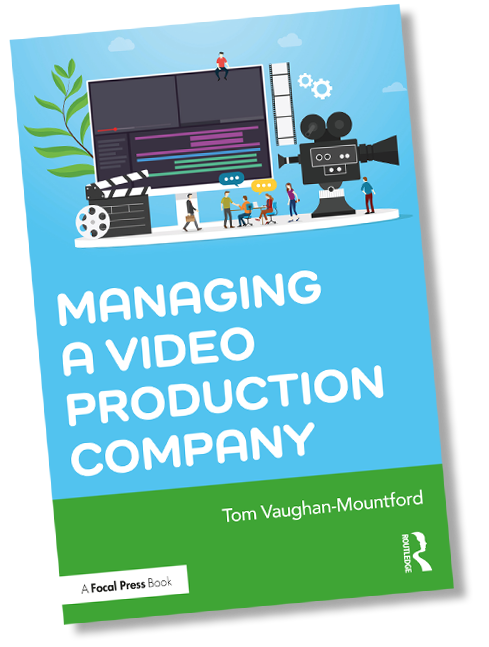The Creative Pitch
Expert insight into dissecting a brief and using it to develop creative ideas to present to the client. This chapter explores the reasons to research a client’s brand and understand their aspirations. We delve into how to demonstrate the experience and creativity of a production company and blend it with creative concepts, demo animatics and soundtracks, and the outline costs, and package all these elements as a cohesive and compelling argument. We also look at the two primary reasons pitches fail to connect with the potential client – and the methods to correct the problem. We also look into the psychology of rejection, and how to use a ‘No’ from a potential client as a source of insight for delivering better pitches in future.
How to Write an Awesome Script
An exploration into the main reasons so many corporate video scripts fall short of their potential, and why improving this creative skill can be a competitive advantage for a production company— especially when working with clients who have difficulty expressing themselves in an engaging manner. We look at the differences between superficial underwritten scripts and bloated overwritten scripts— and how to draft a snappy and concise script that will meet the needs of the client and viewer alike. We explain the importance of the one message, one video, one target audience method, the difference between passive and active voice, the technique of script editing, and the way to make a script more engaging by reverse engineering the facts a client wants to convey into questions that the viewer wants answered.
Keeping Your Production Organised
Starting a commercial production company requires a highly organised mindset, and this extends into project management too. Clients need to feel their production is in safe hands and being organised is the best way for a production company to demonstrate that their clients can have confidence in them. This chapter investigates the importance of a Call Sheet, Shotlist, and Risk Assessment to keep a filming day running smoothly, and a breakdown of what information they should contain— and why.
Coaching On-Camera Contributors
The job of a production company does not end at simply showing up to do the filming, clients want to convey their messages with clarity and energy. This will usually require enthusiastic coaching by the producer. With help from two public speaking coaches we demonstrate some techniques to put on-camera contributors at ease, built rapport, and conduct effective interviews that will provide strong soundbites for the client’s video. The chapter uses illustrative examples of how good performances were coached from nervous interviewees and amateur presenters. We highlight common faults in interview technique that can cause an interviewee head off at a tangent, and the tricks we have used to get a piece to camera back on track.
Communicating with Your Clients
Challenging relationships wreck projects and cause clients to never return. Dealing with clients poorly has a tremendously negative impact on a production company’s reputation. Often, the root cause of strained client relations is poor communication. This chapter analyses how to build a close and mutually rewarding client relationship that lasts through thick and thin. We examine how maintain clear and unambiguous communication, how to manage clients who operate by committee and extended chains of command, methods of forming reliable collaboration, the tracking of billable time, and how to keep relationships flourishing long after projects been completed.
Approval and Delivery
How to diplomatically manage and accommodate the input of clients. We provide a step-by-step technique explaining how to obtain the feedback required to keep a production progressing; without leading the client off course or causing them information overload. We cover the importance of clear version control, naming conventions, and watermarking. The chapter highlights the critical importance of objective checking procedures at all stages of the production process, and the techniques to set and meet production deadlines.
Doing It by the Book
Following the rules of copyright, and attribution; and the etiquette of client confidentiality in corporate communications is the hallmark of a professional. Social media gaffes can torpedo a client relationship in just a couple of clicks, and we provide an illustration of the damage that can be caused by over-sharing business activities on social media. This chapter details why production companies should only use assets purchased from legitimate stock footage and music libraries. It also introduces the care that should be taken when using productions for clients in self-promotional material.
Behaving like a Pro
In a crowded industry it is vital to maintain a consistently high level of professionalism, especially when working with freelance crews and collaborating with competitors. A professional must also seek to understand and be sympathetic of their clients’ office politics and use tact and diplomacy to eventually become regarded as part of their clients’ teams. Professional production companies offer carefully considered advice to help their clients reach their objectives, but also understand when to take their clients’ requests onboard—keeping a relationship amicable—even when the client might be incorrect. Lastly, we consider how to remain objective when a client critiques a production; we close by discussing a method to remain impeccably professional even when dealing with a genuinely disruptive client.
Managing Your Tech
Efficient production companies construct speedy and reliable technical infrastructures. We examine the choice between Mac and PC, and the importance of investing adequately in equipment that is of the right specification to do the work. We detail the critical importance of having multiple backups— and the time-tested procedures to make sure project assets are never at risk of getting lost. The chapter then investigates the options for long-term archival of media and the potential future value of client assets.
Managing Your Finances
The most important factor thing to remember while starting a production company is to make 100% certain you're always getting paid for your work, forecasting ahead, and always ensuring you have enough cash to stay in business.
